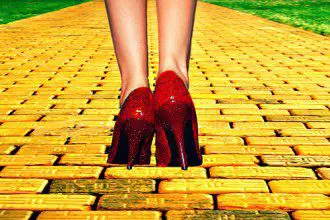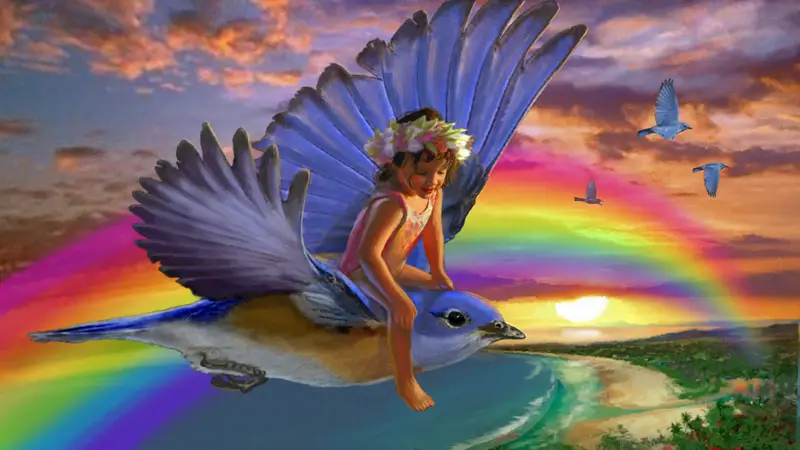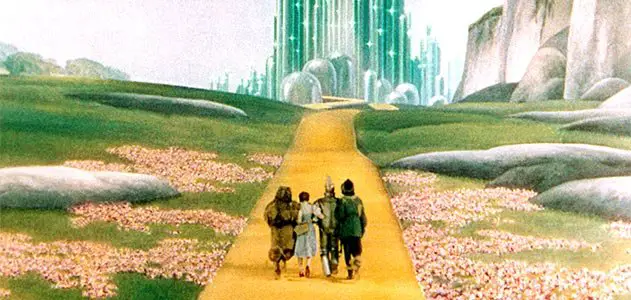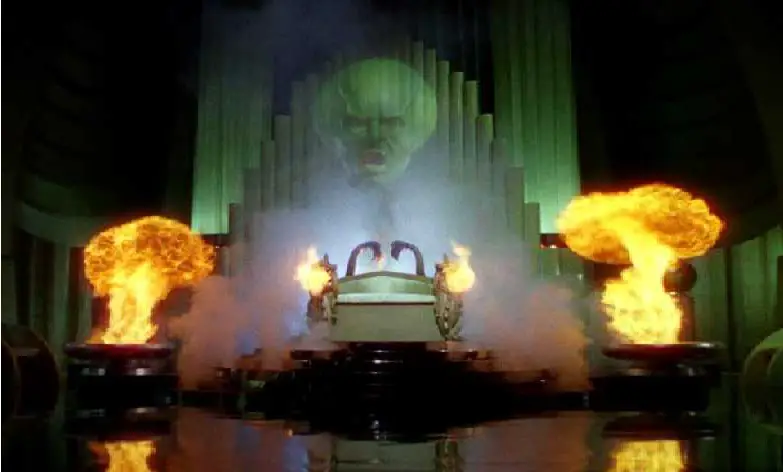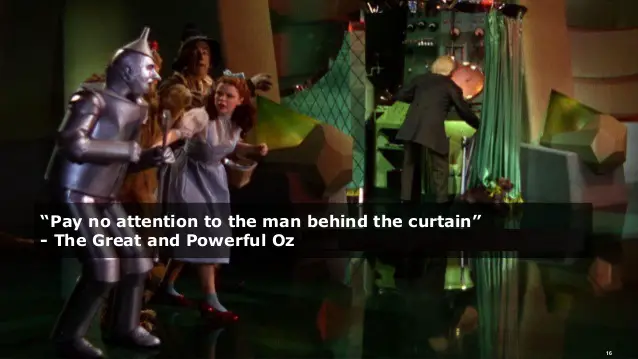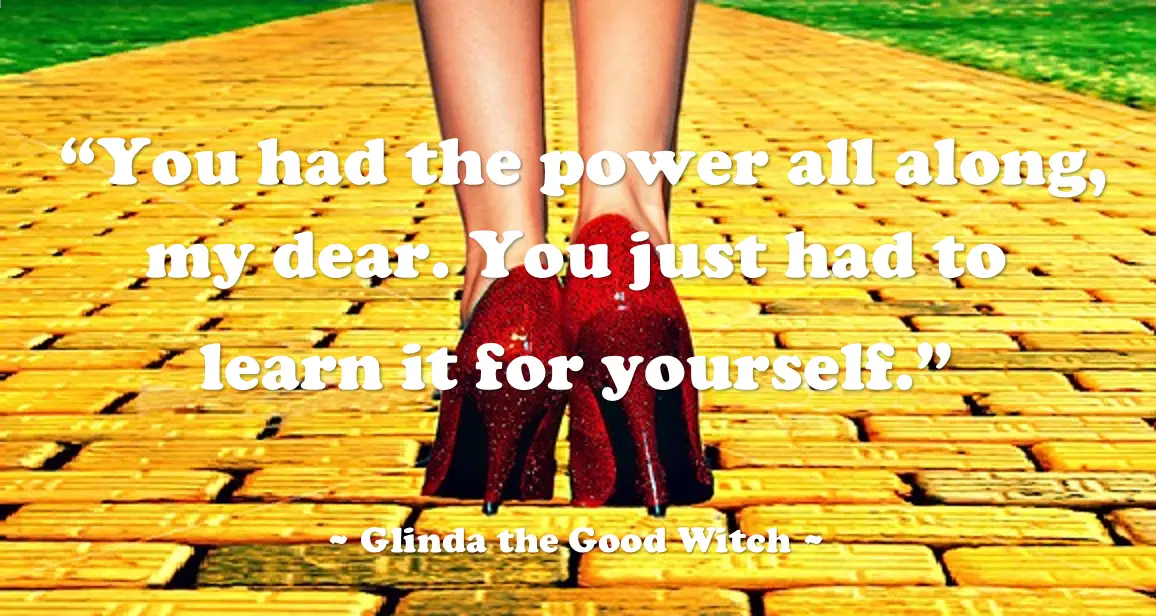By Irwin Ozborne
Contributing writer for Wake Up World
In junior high school, I was a painfully shy student. It was to the point I would go through an entire week without peeping a single sound. While it was quite easy to shield my anxiety during most classroom activity, the lunchroom was always my greatest test. How could I possibly hide myself in a crowded cafeteria?
There was always one table in the back of the room which only had about five kids sitting there (the tables sat about 20-30 people). With so many empty seats at the table, it was the perfect spot for someone with severe, debilitating social anxiety. This group was the outcasts of the school. They wore the same clothes every day, never paid attention in class, didn’t follow the rules, had long straggly hair, and were already experimenting with drugs and alcohol. But, they were also different in the sense that they had no desire to fit in with the “cool kids.” They were perfectly content being in their own skin.
They also held different views on the world. They didn’t gossip about other students, blame teachers, or talk bad about the janitorial staff. In fact they talked about how they helped the janitors after school in exchange for being taught how to use certain tools. For it was these kids – the outcasts – who saw the world for how it was, they did not just blindly obey the forces that were trying to socialize them into robots.
[pro_ad_display_adzone id=”110028″]
“Irwin!” a teacher shouted from across the room, “What are you doing sitting there!?
She shouted as if my life was in imminent danger, sprinting across the room with her arms flailing like she was rescuing a drowning child. Her overly-dramatic antics created a major scene – the exact opposite of what a child with social anxiety desires. But, it was clear, this incident wasn’t about me – it was about her saving a kid from harm. She yanked my shoulder back and with fear in her eyes.
“You don’t have to sit here! Are they making you do this? You can sit somewhere else!”
Embarrassed, I slowly looked at my frantic teacher and then looked back over at the kids at this table. All of them had a look in their eyes as if to say, “It’s OK to leave. We don’t blame you.”
Then I looked back at my teacher and spoke with confidence in my voice for the first time in my life.
“I want to sit here.”
“What!?” She shook her head in disbelief, “You want to sit here? With them!?”
“Yes,” I looked back at them, “I want to sit here.”
She threw her arms up in disbelief as if another child was lost to these terrible monsters. But, my question was: Where was she as I sat alone in her classroom for a semester? Where was her dire need to “save” me when she noticed the bruises on my arm and cuts on my eye? In retrospect, it wasn’t about “saving” me, it was about the opportunity to save me in front of a crowd.
Over The Rainbow
This teacher is one of many that take part in the everyday presentation we put on for the world. We wake up in the morning, put on our masks, and then put on a play for the world to see. The thing I enjoyed about this group of kids was that they saw behind the phoniness of the world, and I felt together we shared a passion to discover the truth.
We celebrate truth-seekers throughout children’s books, films, and stories; yet, when children look to re-enact this behavior in “real” life, it is frowned upon.
In The Wizard of Oz, Dorothy is tired of the boring and dull life on the farm in rural Kansas. She is trying to explore and the adults continue to push her away, telling her to “go somewhere you can’t get into any trouble.” This turned into a breakthrough for Dorothy as she dreamed away of a different life, another dimension, a home void of the displeasures of going through the motions of life. She breaks into singing the classic song, “Somewhere Over the Rainbow” which describes this desire to go to a place where “dreams that you dare to dream, really can come true.”
But Dorothy is not the only character with this yearning for truth. Alice from Alice in Wonderland, also was in a depressed state of mind in which she couldn’t find the energy to do the things she once loved until chasing a white rabbit down his rabbit hole. In The Little Mermaid, Ariel is criticized and discouraged about seeking life above the sea and searching for a different existence. And Belle from Beauty and the Beast is considered odd because she does not go accept the norms of society.
We are attracted to these tales, because it is our innate desire to seek the truth beyond the mask. Everyone has this desire because it is how we are brought into this world, before it is blocked away from us by the masks we are told to wear.
The Twister
Quite often in the recovery community, you will hear people talk about their absolute worst moment on earth as a “blessing in disguise.” People talk about the point of hitting rock bottom was the time that the fall finally stopped, and gave them the opportunity to get back up.
Frustrated with her existence, Dorothy runs away from home in despair, just before gusty winds sweep over the farmland. Her family rushes into the cellar for shelter and locks the doors before Dorothy can make it back home. Finally Dorothy makes it inside the house and tries to seek refuge in her upstairs bedroom. While debris from the twister is whipping around, she is hit with an object and loses consciousness. Before she knows it her entire home and life is being turned upside down and carried away.
This is symbolic of addiction.
It is important to note that everything in this film is symbolic. Dorothy cannot get in the locked house and is trapped outside in this twister (addiction). Her home represents basic needs and values, and the fact she is locked outside is showing that something is being rejected and she is not receiving these basic needs. Dorothy finally gets in and she is struck in the head by a falling window and knocked unconscious, indicating her state of powerlessness to the twister.
After regaining consciousness, Dorothy peers out the open window as she is doing some soul searching in the midst of her active addiction. She starts seeing happy images of her aunt, uncle, farm hands, and animals. The final object she notices is Miss Gulch – the woman who was trying to take Toto away. Toto is always by her side and always knows what to do, hence, he is her intuition. Miss Gulch is Dorothy’s human shadow – the dark part of our self in which we constantly reject. It is our inner voice telling us we are not good enough. Once she recognizes Miss Gulch, she suddenly transforms into a witch with an evil laugh before Dorothy is brought to the ground by her own fear and confusion. It isn’t until this point that Dorothy recognizes she is engulfed in the twister (addiction).
Then, BAM! The houses crashes and Dorothy has hit rock bottom.
She wakes up and nobody is around. She is all alone in a dark and quiet home. She has no one to talk to and no place to turn. Everything she has ever loved has disappeared. It isn’t until this point that she is to begin the process of recovery and begin a new life.
Early Recovery – Journey Into the Self
Dorothy opens the door and the screen lights up in full color for the first time in the film. In the background, the music to “Somewhere Over The Rainbow” is playing as she steps outside into a beautiful new existence.
This is symbolic of early recovery – an inward journey to self-discovery.
We have arrived at that place we dreamed about, the place in which we could be ourselves, and a place in which we were free. We have found our way over the rainbow, without the use of drugs or alcohol for the first time.
Dorothy is first greeted by the Good Witch of the North, Glinda, who looks more like a fairy or angel. This is the part of our recovery in which we start to realize that things aren’t always as they appear. The things we used to view as “old and ugly” can be presented in a new light of majestic beauty.
To Dorothy’s surprise she even comments, “I never heard of a beautiful witch before.”
[pro_ad_display_adzone id=”110030″]
Dorothy is then informed that her house landed on the Wicked Witch of the East, who has been oppressing the munchkins for years. The munchkins are fun-loving people who represent our playful youth in which we love things unconditionally, forgive easily, and live in the present moment. They have been trapped by the destructive part of ourselves (Wicked Witch). Dorothy is treated as a queen by her inner child (munchkins) for finally putting an end to the mask she has been wearing.
While the munchkins view this situation as a miracle, Dorothy claims it was no miracle at all. This is the blessing of rock bottom, the twister, our past mistakes, and the worst parts of our existence typically tend to be the greatest blessing in disguise.
Killing the False Self
When we are young, we are free and loving to the world around us. As we grow, we become socialized into fearing one another and being constantly discouraged to be ourselves. We are domesticated to think a certain way, act a certain way, talk, and behave just like others. This is our mask, also known as the false self.
The Wicked Witch of the East was the mask that was put over our true self, or munchkins. It took a twister, or addiction, which spiraled out of control and had to hit rock bottom before we could finally accidentally kill this false self. And then start all over, reborn, as our true self.
In Dorothy’s journey, this is celebrated to the notorious tune of “Ding Dong the Witch is Dead.”
In recovery, this is referred to as the “Pink Cloud” phase as life seems quite magical and perfect. However, there are still obstacles and adversity we must face. Dorothy meets her first one with the poof of pinkish-reddish cloud of smoke and is introduced to the Wicked Witch of the West – same character as Miss Gulch.
Dorothy has more shadow work to do, and the Wicked Witch of the West makes it clear that she is going to be her enemy on this journey. The object the Wicked Witch most desires is the Ruby Red Slippers in which Dorothy has recently acquired. Glinda informs Dorothy that “those shoes must be very powerful if the witch wants them so badly.”
This leads to Dorothy’s first longing for “home.” Yet, she is still a lost soul and has no idea where to turn and where to go. She is immediately informed that her best option is to find God, which is symbolically represented in the film as the Wizard of Oz.
Confused, Dorothy questions whether this is a good or bad wizard, to which Glinda replies “He is very good, but also very mysterious.” In order to meet the wizard, she must follow the yellow brick road and never remove her slippers.
The Yellow Brick Road is our spiritual path that we must all take to find our way “home,” or in finding our true spiritual self.
Follow the Yellow Brick Road
While instructed to stay on this path, we soon find out that it is not exactly the destination – in this case the Wizard of Oz – but the journey in which we discover our answers. Dorothy is told that the Wizard of Oz will have all the answers; however, the problem is she was searching for the Wizard when she should have been seeking Oz (the land that surrounds her).
Along her inward journey, she encounters other important aspects of herself – wisdom, compassion, and courage. Once again they are in the symbolic form of a scarecrow, tinman, and lion, respectively.
At a fork in the road, Dorothy first encounters the Scarecrow. The Scarecrow talks about not having a brain and it his greatest desire, yet throughout the film he comes up with creative ideas. Next, she meets the Tin Man who yearns to have a heart just to register emotions. Likewise, the Tin Man continues to show compassion throughout the film despite his belief of being heartless. Then finally they encounter the cowardly lion who reveals his secret of lack of courage; although, he too, uses his bravery throughout the journey.
Following the Yellow Brick Road, the shortcomings and challenges of the truth-seeker soon becomes their strongest, most poignant attributes.
Ego Traps
However, our shadow is never finished with us. The Wicked Witch of the West plays games by luring in the gang off their path. She creates something that is soothing to the eye, yet will put them to sleep and end their journey – poppy fields that cover their path.
This is one example of an ego trap. Each religion has a variation of what is referred to as spiritual warfare. Some refer to it as the angel and the devil on your shoulders; good versus evil; god versus satan; heaven versus hell; the ying and yang; the Cherokee proverb of the two wolves fighting inside of you – one good and one evil – and the one that wins depends on which one you feed; the lessons from karma which state each choice you make determines your future circumstances; and of course the ongoing spiritual battle of the ego/false self versus the soul/true self.
While this battle is ongoing, the ego pulls out all the tricks in the book to regain control. Ego traps are the most effective way to detour you from your path. Some of the most common ego traps include:
- Knowing the Path versus Walking the Path: Quite literally in the film, it is clear that their path is to follow the yellow brick road; however, despite this knowledge, they are easily guided off course with the beauty of the Emerald City and the poppy fields which nearly ends their journey.
- Feeling Spiritually Superior: Prior to their first meeting with the Wizard of Oz, the Lion is sensing that his lifelong quest for courage is coming soon and he begins singing “If I were King of the Forest” and talks about having others bow down to him. In our spiritual journey, it is easy to fall into this trap of the need to be right about spirituality. As Lao Tzu says “He who knows does not speak. He who speaks does not know.” It feels good to gain insight and recognize these positive changes in our life, but the ego can use this as a trap into believing that it is I (the ego) that is responsible for our advanced spirituality.
- Judging Others who are “Less Spiritual”: While this theme is not prevalent in the film, it is probably the most common. The notorious quote that I hear often in meetings is “Religion is for people that are afraid to go to hell; spirituality is for people that have already been there.” This gets people excited and can relate, but the religion bashing is stating that we are better than a group of people because our beliefs are right and theirs are wrong – isn’t this the same reason most people get turned away by religion? At the end of the film, Dorothy nearly falls into this ego trap as she explains her awakening. Nobody believes her and they tell her it was all a dream, but she is certain it wasn’t. But, she realizes the trap and says “Anyway, I am glad you are all here and I love you all.” Other examples are when we spend more time in nature, do yoga, eat organic food, stop watching the news, etc., but then start judging and labeling those who still do those things because they are not on “our level.”
- Positivity Mask: Also not in the film, but worth mentioning as this trap involves pretending to be overly positive at all times. Even the most advanced spiritual beings will have their bad days and feel a full range of emotions. When the group first meets the Lion, he is into this trap in a different type of way by trying to scare the crew. Later he confesses his true feelings of lacking courage, which ironically takes a great deal of courage to express how we are truly feeling inside. Just another example the cowardly lion expresses courage throughout the film.
The Church of Oz
The Wizard represents the Western Christian version of God. He is the all-powerful, all-knowing, all-good yet mysterious patriarchal figure, who represents a religious interpretation of God as one powerful creature who is the ruler of the universe. In contrast, Oz — the name of the entire land in which the majority of the story takes place — would represent that God is actually in all things: the trees, fields, color, all characters, etc.
Dorothy and her companions were mistaken; they were searching for the elusive and all-powerful Wizard when they should have been seeking Oz and their natural, most evolved place within it.
At the door of the Emerald City, the gang starts to notice some peculiar traits of this magical place. Their first impression is dampened when they ring the door bell and are greeted by a crabby man who refuses to serve them because they did not “follow the rules” of knocking on the door instead. Once they knock, he returns with a friendly smile on his face. This is symbolic to the modern-day lifestyle of the church in which you come in on Sunday and everyone greets you with a smile, handshake, and maybe a hug. But, then after leaving for an hour of connection, it is back to competition, resentment, anger, and disgust for each other.
They ask to see Oz, but are told that nobody has ever seen him. He only agrees to do so, once seeing the Ruby Red Slippers on Dorothy’s feet. Here we have this all-powerful being that refuses access at first glance and then changes his mind based on appearance.
This symbolism continues as they group is not granted access until they clean up first. The scarecrow is given new straw to help keep him young, the tinman is treated with being sharpened and new oil to help keep him repaired, and the lion receives a manicure and pedicure to look as externally beautiful as possible before appearing before the magnificent Oz.
This, too, is an ego trap. While it feels good to be well-polished, it is creating a mask/false self. This occurs often when someone goes from poverty into fortune and soon forgets the roots of their struggle.
In their first encounter, Oz is quite harsh to the gang. He refers to the tinman as “clinking clanking piece of junk” and the scarecrow as a “billing bail of fodder” and the lion faints before taking on any insults.
The Wizard eventually makes a deal with them and promises to grant their wishes only after they can prove that they are worthy of his power. They are instructed bring the broomstick of the Witch of the West. The group pleads that this could only be possible if they were to execute her, in which he instructs to “Just go.” Is this great powerful Oz asking us to kill one another just so we can prove we are worthy of his help?
Similarly, so many wars are fought over religion and claiming to be doing things in the name of our God. What kind of God are we following in which we create artificial borders, discriminate, judge, hurt, and kill each other? God’s love is unconditional; yet, here this is clearly a condition of proving ourselves worthy of his love and assistance.
Shadow Work
As they are walking through the forest to find the witch, she sends her flying monkeys out to attack them and capture Dorothy. The monkeys represent our mischievous side of our personality, which is why they are protecting the witch (our shadow).
The only way to free ourselves, and return home, is to do shadow work and embrace the deepest darkest fears of our soul. The haunted forest represents the journey into the subconscious, which stores the repressed memories, thoughts, and feelings.
Once at the castle, the witch threatens to kill Toto (intuition). Intuition is soul-guided, it is when our true self is running the ship and guiding our decisions. The Witch (shadow) knows that if we are to remove the intuition, the ego will forever be in control. Dorothy offers to give up all her power (slippers) in exchange for her intuition (Toto). But before this can happen, Toto escapes. Her intuition knows that the only way to survive is to find the other aspects of herself that need shadow work – the Lion (courage), Tinman (compassion), and Scarecrow (wisdom).
Toto leads the crew back to the castle, which literally represents our subconscious mind. The guards are put in place to protect us from releasing these painful memories. And it is here in which the shadow work takes place.
The scarecrow, fearful of not having a brain is the one who develops the plan. This plan includes the Lion leading the way; although quite fearful, courageously states “I’ll do it if it means saving Dorothy… I may not come out alive, but I’m going in there.” It takes true courage to take on the hidden aspects of ourselves.
The climatic scene within the castle comes when the witch sets the scarecrow on fire – his greatest weakness. In an effort to put out the fire, Dorothy throws water on the fire and it subsequently gets on the Witch. To their surprise, the water begins to melt away the witch leading to her demise.
The greatest threat to our true self, the Wicked Witch of the West, could only be defeated by the most basic, purest substance of all – water. The substances that we carry within every cell and makes up the majority of our body is the very purity that we needed to defeat our shadow.
Once she melts away, the guards rejoice that the wicked witch is dead. The guards forgot that what they were protecting this entire time was working against us. This is how repressed thoughts work, they feel they are protecting us, but in reality they are still apart of us and always will be until we face them directly.
The difficulty about shadows, is the more we try to resist them, the more they appear. We cannot run, hide, or drink away these hidden aspects of ourselves.
The Power Lies Within
Upon returning to the Wizard, the group presents to him the broomstick. The broomstick is symbolic for sweeping away aspects of our self which is why the Wizard required the group to do so.
However, he still refuses to grant their wishes. This time, the group starts to argue with him due to his lack of integrity. This is the beginning of their questioning of the organized religious system and the brainwashing of everything they had been told to be true. They are ready for the awakening process. Of course it is Toto, the intuition, who takes the next step by removing the sheet to reveal that the Wizard is just an old man using a voice projector and a smoke machine to create the effects of “the Wizard.”
This is symbolic of their breaking away from organized religion; the Wizard has been exposed. The group is infuriated and demands the gifts of a brain, heart, and courage.
The Wizard affirms that it is all a lie. He then goes on to tell the Scarecrow that everyone has a brain before presenting him with a diploma. Instantaneously the Scarecrow recites a complex mathematical equation. The Wizard then tells the lion that he has disorganized thinking and that he only thinks he lacks courage because he runs away from danger – which he instructs him is actually wisdom. He then explains that the lion has displayed courage and presents him with a medal of honor. The same is done for the Tinman by explaining everyone has a heart and is then presented with a heart-shaped clock.
Although they ultimately “found” what they were looking for, it was only by seeing through the deceptive mask of the Wizard — beyond the illusions of the external God — that this became possible. Already within them, the gifts they received were not granted by the Wizard but realized by their personal journeys through Oz.
Finally, the Wizard needs to fulfill Dorothy’s promise – to send her home. Once we are on the spiritual path we start to have this longing for home. This feeling that there is a greater existence out there and that this life is a temporary placement but eventually we will return to a place we call home. The Wizard is a big talker and explains how he will fly her home in a hot air balloon. There is a major celebration and spectacle of an event in which he boasts about his great powers one final time.
Just as the balloon is ready to take off, Toto hops out of the balloon knowing that Dorothy will follow shortly thereafter. The balloon sails away and the Wizard says he cannot return as he does not know how to operate the balloon. Hot air balloons represent feelings of social elevation and superiority, fame, or popularity. Toto realizes this is another ego trap and escapes from the situation. Another panic ensues for a short period of time as Dorothy feels stuck, stranded, and unable to return home. At this point, Glinda returns to their aid. Dorothy starts begging for help before the following exchange:
“Oh, will you help me? Can you help me?” Dorothy pleaded.
“You don’t need help any longer,” Glinda smiled, “You always had the power to go back to Kansas.”
“Then why didn’t you tell her before?” demanded the scarecrow
“Because she wouldn’t have believed me,” said Glinda, “She had to learn it for herself.”
“What have your learned Dorothy?” asked the Tinman.
“I think that it wasn’t enough just to want to see Uncle Henry and Auntee Em. And if I ever go looking for my heart’s desire again, I won’t look any further than my own backyard. Because if it isn’t there, I never really lost it to begin with.”
While her friends found this concept too simple, they were confused as to why they never thought of it earlier. Glinda simply responds:
“No, she had to find it out for herself.”
While the story has to do with Dorothy going back to a physical home, this symbolizes of a peaceful state of mind and redemption of the Self. Home refers to our true self. We all have the power within us to return home at anytime, but just like for Dorothy, it is a journey that we have to figure out on our own.
Recommended articles by Irwin Ozborne:
- The War On Drugs: How the “Land of the Free” Became the “Home of the Slaves” for 2.3 Million Americans
- Celebrating Genocide – Christopher Columbus’ Invasion of America
- Licensed to Kill: Psychiatry, Big Pharma and the State-Sanctioned Drug Cartel
- The Craving Behind the Craving: Addiction as a Spiritual Disease
- Bipolar? Or Gifted? The Modern Day Epidemic of Medicated “Madness”
- Suicide: Falling Through the Cracks of Stigma
- The Fictions Surrounding ADHD and the “Chemical Imbalance” Theory of Mental Illness
- Compassion, Christianity or Consumerism? The True Meaning of Christmas
About the author:
Irwin Ozborne and his partner Cortland Pfeffer founded the community Taking The Mask Off in 2014 to help shine a light on the mental health industry (as well as other areas of our society that are shrouded in deceit and misinformation) and share insider perspectives and real life stories that have been gathered over 20 years in the psychiatric field.
An avid historian, Irwin Ozborne (a pen-name) is a survivor of childhood abuse and torture over a period of 13 years, and a recovered alcoholic. As a mental health practitioner, today Irwin practices holistic care and incorporates eastern philosophy into his work with clients. He is available for speaking engagements as well, and can be contacted via email: [email protected]
[pro_ad_display_adzone id=”110027″]

